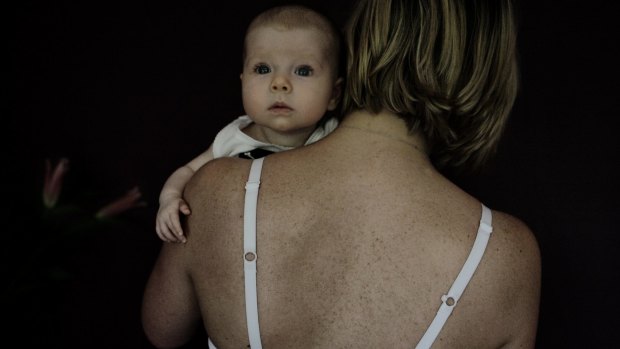This was published 2 years ago
Opinion
Steps government must take to give women more freedom
Jessica Irvine
Senior economics writerSo, what next for women? While touted as a “women’s budget”, in reality, last Tuesday’s effort was only ever likely to be a first step on a long path towards lasting economic equality and security for women. Sure, there was welcome extra money for childcare. But at $1.7 billion over three years, that’s only about a 5 per cent boost to the annual $10 billion that taxpayers spend on the childcare subsidy.
We can pussyfoot around here and observe that childcare should not be just a women’s issue – it’s a family issue. But the reality is it is still women who bear the bulk of the responsibility for child-rearing in this country so, yes, it is predominantly a women’s issue. It shouldn’t be, of course.

Better paid parental leave will set up women to suffer less financial disadvantage.Credit: Louise Kennerley
And there is a policy path we could tread to a world where it isn’t; where responsibility for care is equally shared. Let me shine a light on it. It starts not with childcare, but with paid parental leave (something this budget did not mention).
Why? Because the choice about which parent will take care of a child in the early months of life often determines who will come to be seen in that family as the secondary-income earner. Crucially, it is then this person’s salary that becomes the focus of a couple’s return-to-work decision; whether the benefits of that person’s paid work outweigh the childcare costs and reduced family payments.
It’s an admirable feature of our family tax benefit system that payments are withdrawn as incomes rise. It stops very rich families from getting payments. But this withdrawal of benefits as incomes rise also acts as a disincentive to work. Economists call this phenomenon “effective marginal tax rates”. These rates go beyond personal income tax to also count lost benefits and childcare costs against a worker’s wage.
According to modelling by Professor Miranda Stewart at the University of Melbourne, it is the withdrawal of family benefits that looms largest over the decision of a secondary income earner on whether to work one day a week or two. By day two, this person faces an effective marginal tax rate of 60 per cent, losing 60 cents out of every additional dollar earned in lost benefits, childcare costs and income taxes.

Women lose more of their income for every day they work.Credit: Michael O'Sullivan
On day three of work, the total penalty rises to more than 80 cents in the dollar. On day four, it reaches 90 cents in the dollar.
By days four and five, childcare becomes the real crippler, as family payments have largely been extinguished. Out-of-pocket costs of childcare now eat up more of the secondary-income earner’s wage than income tax.
You can start to see now why the initial choice of who will be the primary carer – and hence secondary-income earner – carries such important consequences.
Today, paid parental leave exists as an either/or proposition. Either dad takes it or mum, but not both. And yes, it’s usually mum. What we really need is a payment that encourages a tag-team effort between both mum and dad. In short, parental leave should be expanded and couples who choose to share leave equally between them should be rewarded with extra paid leave. Maybe it’s three months off for mum, and then three months off for dad.

Illustration: Dionne GainCredit:
The fascinating advantage of this particular arrangement is that it would then be dad’s decision about whether, and how, to return to work that would become the subject of the complex household calculus to decide if it makes sense, given all the disincentives.
We should also try to reduce the complex calculus of disincentives to work that currently bank up against secondary income earners – of whichever sex.
Anything you do to reduce the out-of-pocket cost of childcare increases the returns from working. As does abolishing or increasing the income limits against which eligibility for family payments are determined. And lowering income taxes, too, lets secondary-income earners keep more of their money. But all three initiatives would come at a substantial cost to the budget.
It’s a thorny public policy area indeed, and one long overdue for a detailed and comprehensive review. Suggestions for universal childcare, flat-rate family tax payments and a 26-week paid parental leave scheme (shared equally between parents) are all worth modelling and integrating into a revamped stage three tax-cut package.
Ultimately, families will make their own decisions about what works best for their families. But they should do so in a policy environment that does not inadvertently trap one family member on a path to low income and skills atrophy. If we’re serious about providing economic security for women, it bears recognition that not all family units survive and women who have specialised in the production of home care are left at a lasting financial disadvantage in the workforce in the event of family breakdown.
We need a system that does not predominantly discourage women from getting back to work after childbirth. This is important not just for the economy, but for a woman’s own financial freedom and independence. There is still considerable work still to do.
Opinion newsletter
Opinion takes on the week’s most debated topics with views that will challenge, champion and inform your own. Sign up to receive it every Thursday.